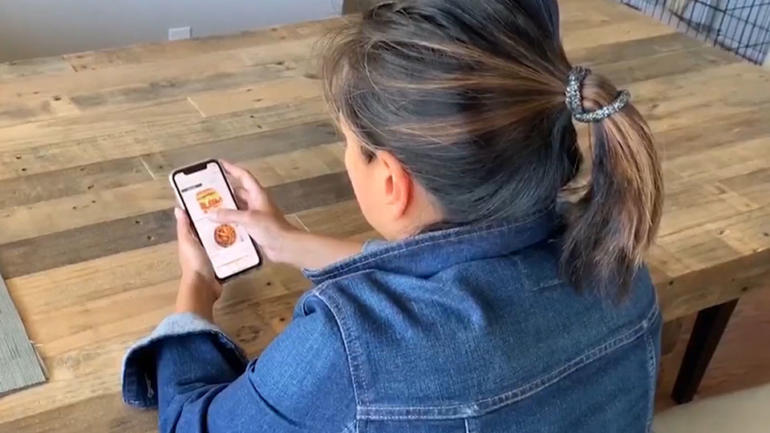The restaurant industry is evolving quickly. Mobile devices have made ordering easier than ever, fueling demand for speedy on-demand service.
CGTN’s Mark Niu reports.
At Top Round Roast Beef, the staff is busy making its signature sandwich to serve a restaurant teeming with customers. But at the very same kitchen, they’re also busy preparing delivery orders for Red Ribbon Chicken, TR Burgers and Wings, and Ice Cream Custard by Top Round.
These three brands only exist online. They’re virtual restaurants.
“If you are at home, looking for something to order. If you want burgers, you are searching burgers. Top Round isn’t going to show up for burgers. Top Round is its own little niche for roast beef sandwiches,” said Ricky Lopez, Franchise Owner of Top Round Roast Beef.
“But then if you are ordering fried chicken sandwiches, you are going to type in fried chicken. If you are searching for ice cream, you are going to type in ice cream. So from a brand perspective, everything has its own identity. So there’s essentially four times the opportunity to get an order.”
Top Round Roast Beef used to close at 9 pm. Now it’s open until 2 in the morning. And between the hours of 11pm and 1am, 95% of the deliveries occur. Uber Eats first approached Top Round a year ago to join its app delivery service and spin-off various virtual restaurants.
Today, Top Round uses at least five different delivery services including Door Dash and Postmates. This man delivers for Grubhub and Caviar – where he says, including tips, he can make close to $25 an hour.
Mohammad Allamadani delivers for Uber Eats six to eight hours a day.
“Flexibility. I can work any time I want,” said Allamadani. “It’s my main source of income you know.”
“No restaurant wants to get into that delivery business. It’s an awful part of their business. They just want to focus on getting customers. Get takeout. They want to handle delivery somewhere else. They are happy to give a cut to those delivery services,” said Ray Wang, Principal Analyst & CEO of Constellation Research. “The problem is you need economies of scale. You need density for those services to work. So it turns out that same driver may have three different badges on them. That’s really what’s going to happen in the market.”
The virtual restaurant market has also resulted in ghost kitchens, like one in Pasadena, California, called Kitchen United. Numerous online restaurants only share the kitchen facilities to fulfill their delivery orders.
Kitchen United does have a small dining area where customers can come in for service, too.
“A decentralized approach just like the same way you look at Uber or Lyft in terms of ridesharing services,” says Wang. “There’s a lot of extra capacity that’s sitting out there. So we are going to see a lot of ghost kitchens emerge. The model actually happens in airline food service or in large institutional food service where everything is made in one place, then cook, chill… and then delivered somewhere else.”
Top Round Roast Beef Franchise Owner Lopez says he’s not a fan of the ghost kitchen concept because he likes to make sure he still has a direct connection with his customers. But he admits the industry is changing rapidly as delivery orders now account for 75% of his business.
 CGTN America
CGTN America

